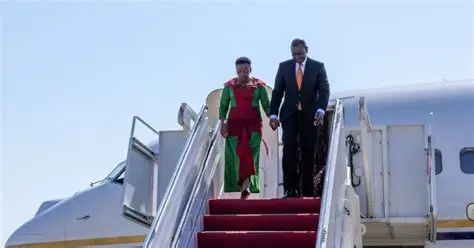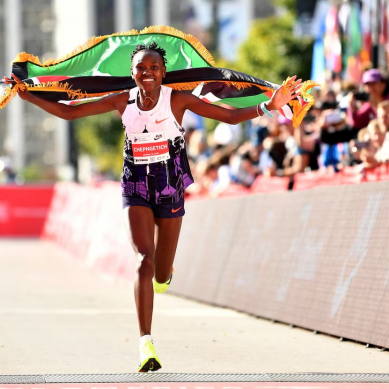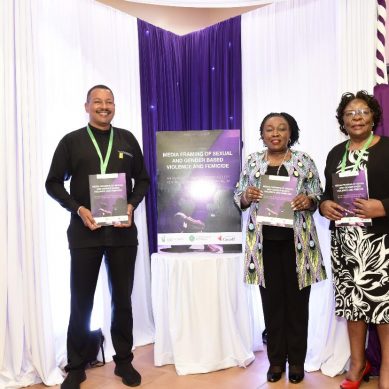
In the inaugural year of President William Ruto’s term, he and his then Deputy Rigathi Gachagua embarked on an extensive series of 51 trips to 34 countries, incurring a staggering expenditure exceeding Ksh1.3 billion between July 1, 2022 and June 30, 2023.
This significant globetrotting despite President Ruto’s earlier commitment to cut recurrent expenditures by over Ksh300 billion.
Paradoxically, his office received the highest additional funding among all cabinet members in the supplementary budgets, predominantly allocated for recurrent expenses. Closer scrutiny of county affairs unveils a surge in travel expenses, coupled with a blatant disregard for established travel policies.
When contemplating the concept of travel, the average Kenyan may conjure images of the daily commute or uncomfortable bus rides during holidays. This encapsulates the typical travel experience for an average Kenyan.
In 2022, amidst rising local inflation rates, World Remit estimated that Kenyans spent an average of Ksh25,440 during the holiday season, covering expenses such as food, entertainment and travel costs.
However, the average Kenyan’s holiday expenditure pales in comparison to the substantial sums expended by top elected and appointed officials on their routine workday travels. Their travel arrangements involve a more comfortable and expensive affair, encompassing numerous personnel, vehicles, hospitality costs, and fuel expenses. Ministries, departments, and agencies (MDAs) collectively expended over Ksh20.4 billion on both foreign and domestic travel during the financial year 2022/23.
The size of delegations accompanying a travelling president or cabinet secretary has become a source of discontent among citizens. Mwangi Maina, a journalist with over seven years of experience covering foreign policy, echoes this sentiment. “Moses Kuria, when he was the trade minister, would travel with a delegation of more than 40 people. That’s craziness, that’s absurdity,” he asserted. However, Mwangi acknowledges the inherently costly nature of foreign policy in the same breath.
As is the case with every expense, someone has to foot the bill. In this scenario, taxpayers’ money is utilized to cover government travel expenses at both the national and county levels, as well as in various Ministries, departments, and agencies (MDAs) such as the Ministry of Defence, the Ethics and Anti-Corruption Commission, the Ministry of Foreign Affairs, and the Teachers Service Commission, among others.
Criticism surrounding the escalating travel expenditures has gained momentum over the 12 months after swearing-in, leading then Deputy President Rigathi Gachagua to address and defend the matter. During a press briefing on June 19, 2023, Gachagua pointed fingers at the media for not adequately highlighting the extent of the president’s activities.
“Cost is determined by the level of activity,” Gachagua argues, urging the media to delve into the specifics of the president’s travels, including destinations and the benefits accrued to the country. While quantifying the latter proves challenging, we have tracked all foreign trips undertaken by Ruto over the past year through official reports and flight-tracking software.
How many trips were taken, and where did the president and his deputy travel?
Between September 2022 and November 2023, President Ruto and former DP Gachagua embarked on 51 trips to 34 countries, averaging about four trips per month. The United States of America emerged as the most frequented destination with Ruto visiting thrice, two of those trips dedicated to attending the annual United Nations General Assembly (UNGA) in New York.
Additionally, Ruto visited the United Kingdom, Tanzania, Uganda and Ethiopia three times in the past year for regional heads of state meetings and bilateral discussions. Meanwhile, Gachagua’s travelled within the same period included visits to Italy, Rwanda, Belgium and Colombia, along with a vacation trip to South Africa in December 2022.
The most extensively travelled month was July 2023, during which the president and Gachagua visited six countries: Comoros, the Republic of Congo, Ethiopia, Italy, Tanzania, and the United Arab Emirates. The trips were for summits, heads of state conference and official events, including Comoros Independence Day celebrations in July 2023.
Maina attributes Ruto’s hectic travel schedule to his novelty on the international stage. “He came into power in 2022 as a man who had no international connection; you cannot compare him with Uhuru Kenyatta,” he observed. “He has to create networks.”
Beneath this packed schedule week in and week out lies a significant cost, one that will be covered by taxpayer money. So, just how much has the president’s office and the government spent on travel?
Current administration’s expenditure
A reliable source for crucial data on expenditure is the Office of the Controller of Budget, responsible for approving withdrawals from the consolidated fund (the government’s bank account). The office regularly publishes quarterly reports detailing expenditures by the government at various levels, down to the county.
According to the 2022/23 budget implementation report covering the period from July 1, 2022, to June 30, 2023, the Office of the President expended over Ksh1.4 billion on travel. Of this amount, Ksh1 billion was allocated to local travel, and Ksh361 million was designated for foreign travel. This figure represents a notable increase of over 30pr cent compared to the preceding 2021/22 financial year, which totalled about Ksh957 million.
Between October 2022, when Ruto and Gachagua were sworn in and June 2023, they have undertaken at least 29 official trips abroad. During this period, the president’s office expended Ksh352 million on foreign travel.
As the economy has faced challenges over the years and demands for expenditure reduction in government have intensified, the trend has been moving in the opposite direction. Examining travel expenditure in the president’s office reveals a significant increase. For instance, the amount spent on travelling has more than doubled since 2013 when it stood at Ksh559 million.
The president’s travel expenditure is a component of the broader recurrent expenditure incurred by ministries, departments and agencies (MDAs). This encompasses the costs associated with running the government, covering items such as salaries, travel, accommodation, electricity and maintenance, all meticulously detailed in departmental budgets and expenditure reports. It’s a cost that President Ruto identified as “dangerous to our debt status” and vowed to reduce by nearly Ksh300 billion in his address to the National Assembly in September 2022.
Ruto firmly stated, “It is not right, it is not prudent, it is not sustainable, it is simply wrong,” particularly in the context of borrowing for recurrent expenditures.
Contrary to this commitment, his administration has augmented recurrent expenditure following the speech, evident in the supplementary budgets. Ruto’s office received the highest additional funding among all cabinet members in Supplementary Budget II.
Notably, of the additional Ksh12 billion allocated, Ksh10 billion was directed towards recurrent functions. The Controller of Budget attributed this change in recurrent expenditure to facilitating effective cabinet decisions for harmonious government operation and executing the president’s mandate as per the Constitution.
A similar trend is discernible in the travel spending by MDAs over the past eight years. In 2022, they reached an eight-year high, totalling Ksh20.37 billion. Cumulatively, MDAs have spent over Ksh148 billion on travel in the last 10 financial years since 2013/14.
National Assembly’s travel expenditure
The inclination for high spending among elected representatives extends beyond the executive, with the National Assembly emerging as the most substantial spender on travel over the past decade. The legislative house has allocated over Ksh44 billion for both domestic and foreign travel since 2013, with the majority – roughly Ksh34 billion – dedicated to domestic travel.
In the financial year 2022/23 alone, the National Assembly expended over Ksh6.4 billion on travel, following a trajectory that mirrors the upward trend observed in the president’s office and MDAs.
- A Tell Media report / By Tom Mukhwana / Reproduced with the permission of African Uncensored







